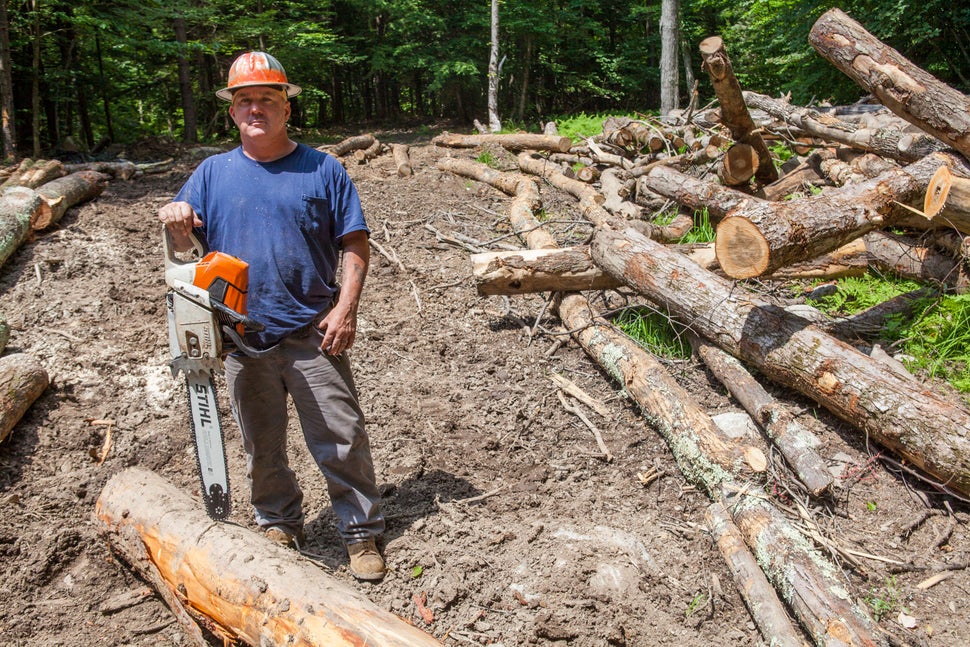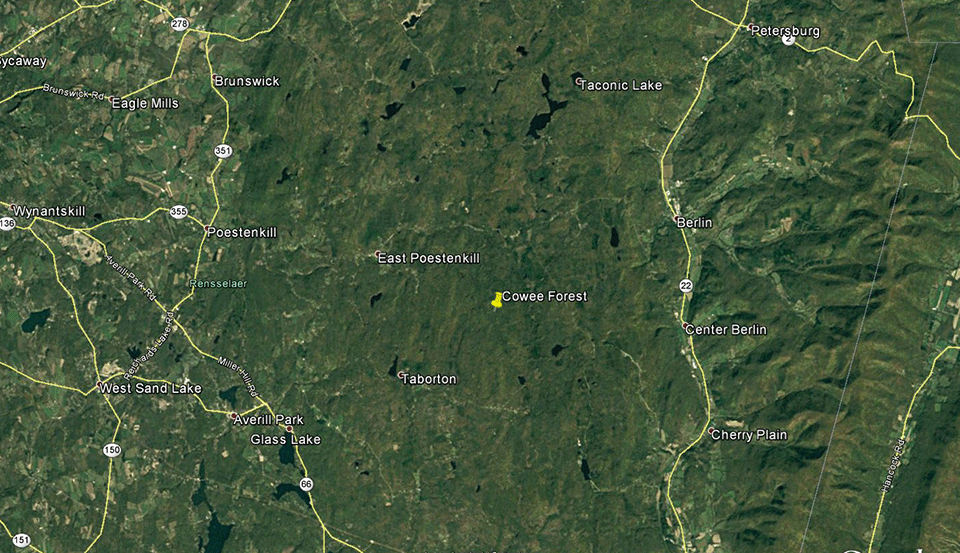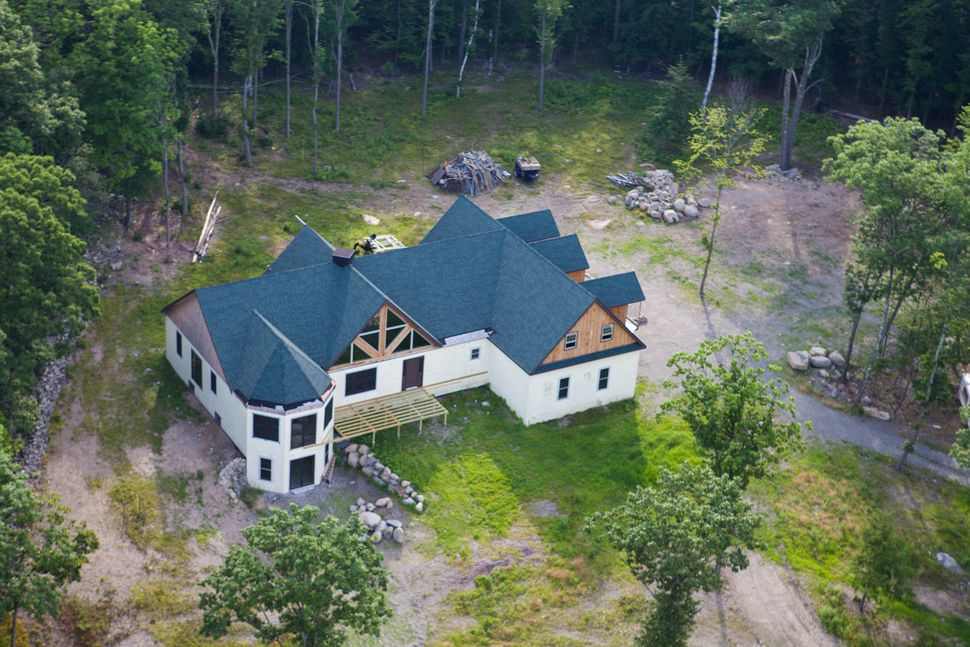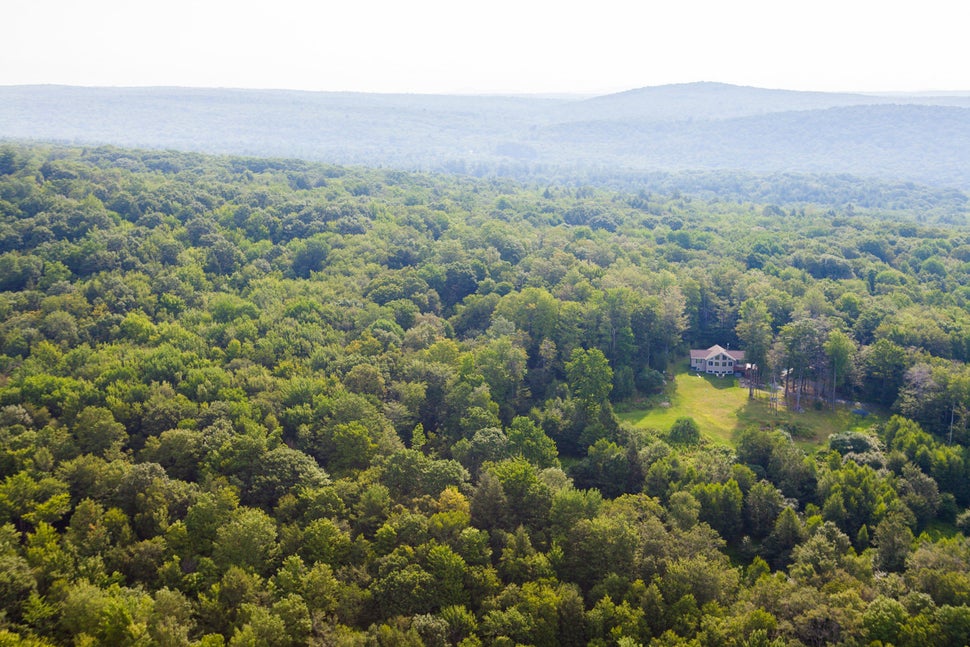The McMansionization Of America’s
Forests Is Hurting Rural People
But one group is fighting to conserve working forests and keep rural economies alive:
8/1/2017

ALEXANDER C KAUFMAN/HUFFPOST
 GOOGLE EARTH
GOOGLE EARTH

ALEXANDER C KAUFMAN/HUFFPOST

ALEXANDER C KAUFMAN/HUFFPOST
Forest fragmentation is the breaking of large, contiguous, forested areas into smaller pieces of forest; typically these pieces are separated by roads, agriculture, utility corridors, subdivisions, or other human development. It usually occurs incrementally, beginning with cleared patches here and there – think Swiss cheese – within an otherwise unbroken expanse of tree cover.
Over time, those non-forest patches tend to multiply and expand until eventually the forest is reduced to scattered, disconnected forest islands. The surrounding non-forest lands and land uses seriously threaten the health, function, and value of the remaining forest.
Any large-scale canopy disturbance affects a forest, but it is important to distinguish between a forest fragmented by human infrastructure development and a forest of mixed ages and varied canopy closure that results from good forest management. The former is typically much more damaging to forest health and habitat quality, usually with permanent negative effects, whereas the latter may cause only temporary change in the forest.
The effects of fragmentation are well documented in all forested regions of the planet. In general, by reducing forest health and degrading habitat, fragmentation leads to loss of biodiversity, increases in invasive plants, pests, and pathogens, and reduction in water quality. These wide-ranging effects all stem from two basic problems: fragmentation increases isolation between forest communities and it increases so-called edge effects.
When a forest becomes isolated, the movement of plants and animals is inhibited. This restricts breeding and gene flow and results in long-term population decline. Fragmentation is a threat to natural resilience, and connectivity of forest habitats may be a key component of forest adaptation and response to climate change.
Edge effects are even more complicated. They alter growing conditions within the interior of forests through drastic changes in temperature, moisture, light, and wind. Put simply, the environment of the adjacent non-forest land determines the environment of the forest fragment, particularly on its edges. This triggers a cascade of ill effects on the health, growth, and survivability of trees, flowers, ferns, and lichens and an array of secondary effects on the animals that depend on them. Ecologists suggest that true interior forest conditions – you know, where it’s hard to hear cars and lawnmowers and it remains cool, shady, and downright damp even during a three-week drought – only occur at least 200-300 feet inside the non-forest edge.
And so a circular forest island in a sea of non-forest would have to be more than 14 acres in size to include just one acre of such interior forest condition. Put differently, reports indicate that the negative habitat effects of each residential building pocket within a forest radiate outward, affecting up to 30 additional acres with increased disturbance, predation, and competition from edge-dwellers. This may not matter to generalist species like deer, raccoons, and blue jays, which may actually benefit from fragmentation, but it is hell on interior-dependent species like salamanders, goshawks, bats, and flying squirrels. The smaller the remnant the greater the influence of external factors and edge effects. A wise person once likened it to ice cubes: the smaller ones melt faster.
Moreover, as forest fragments become ever smaller, practicing forestry in them becomes operationally impractical, economically nonviable, and culturally unacceptable. In turn, we lose the corresponding and important contributions that forestry makes to our economy and culture. The result is a rapid acceleration of further fragmentation and then permanent loss.
Here is the tricky part: when fragmentation occurs in a heavily forested region like ours, at least in the early going we are still left with a largely pleasant condition. We sense that we still have lots of woods where we can work, hunt, ski, and walk the dogs. And to most of us, this seems good enough, even when the perforations expand and those woods are the scattered remains of a fragmented forest.
But is it enough? At some point when the larger forest is highly fragmented, the size, integrity, and connectivity of those wooded remnants deteriorate beyond recovery and they are no longer adequate for native forest plants and wildlife. After all, when the Swiss cheese has more holes than cheese, the whole sandwich suffers.
Michael Snyder, a forester, is Commissioner of the Vermont Department of Forests, Parks, and Recreation.










No comments:
Post a Comment